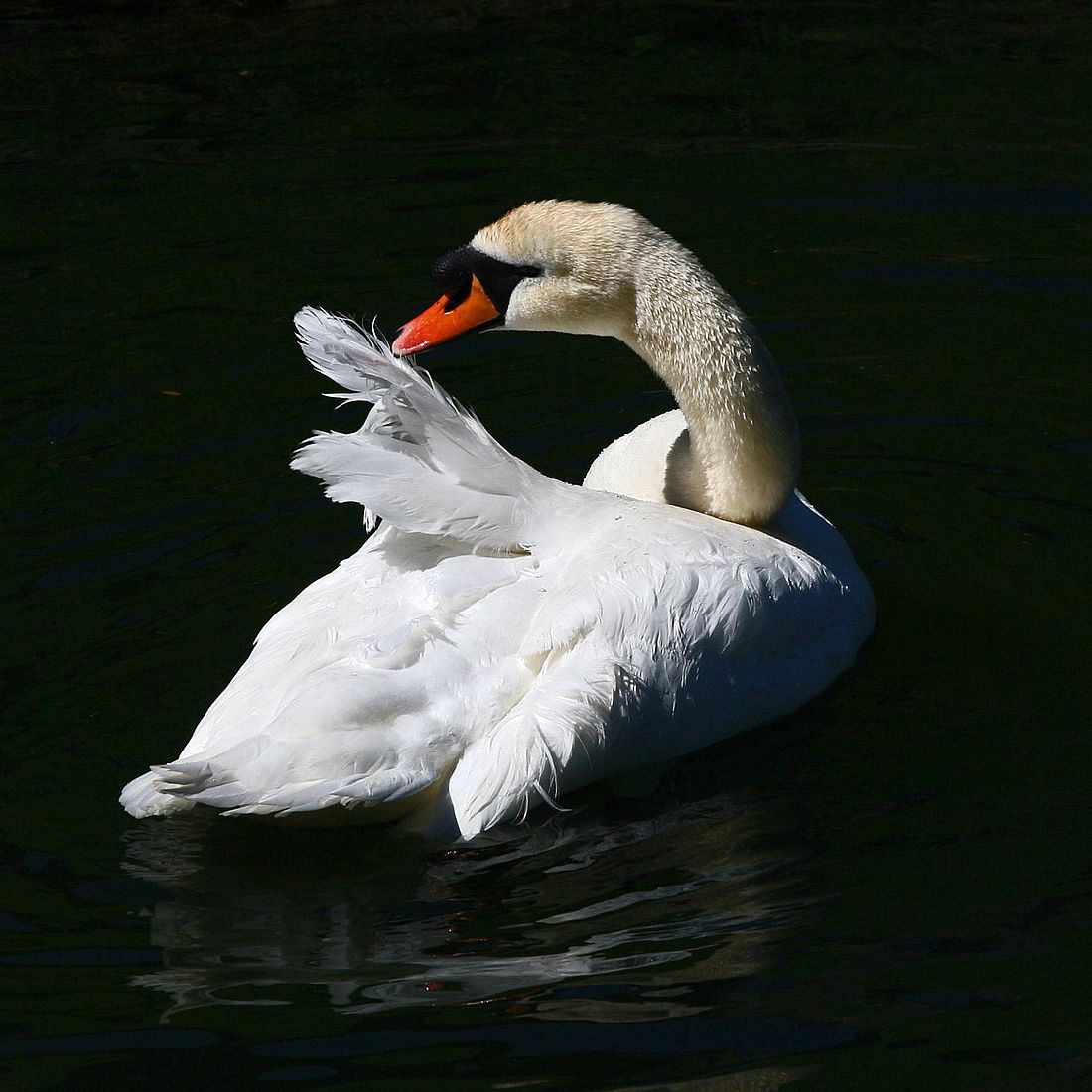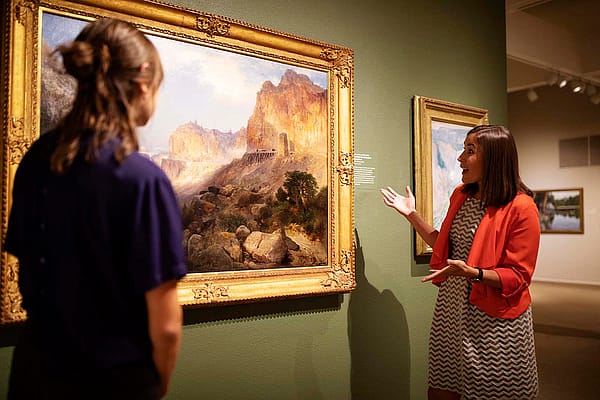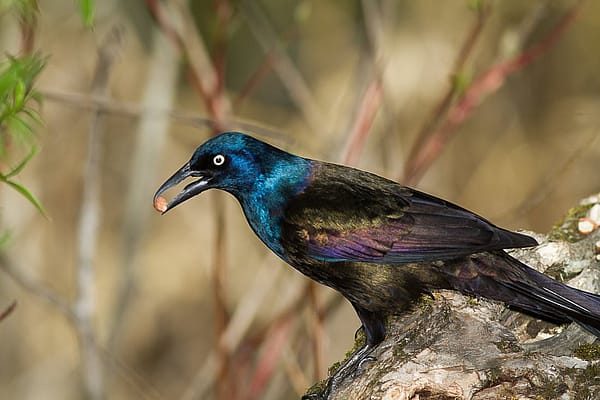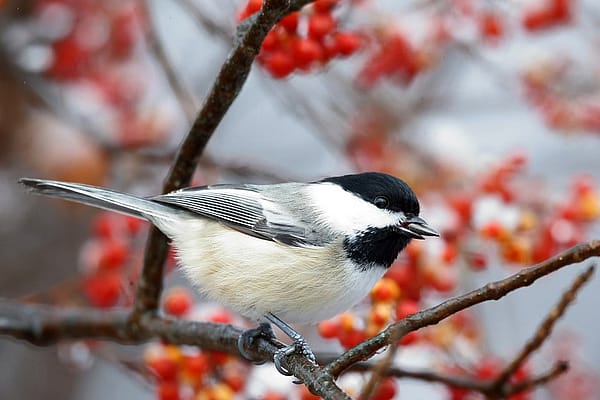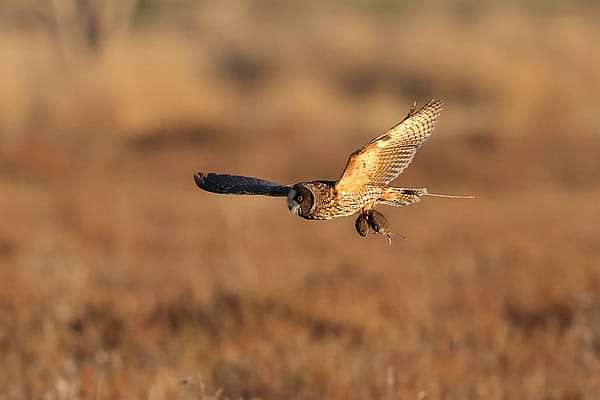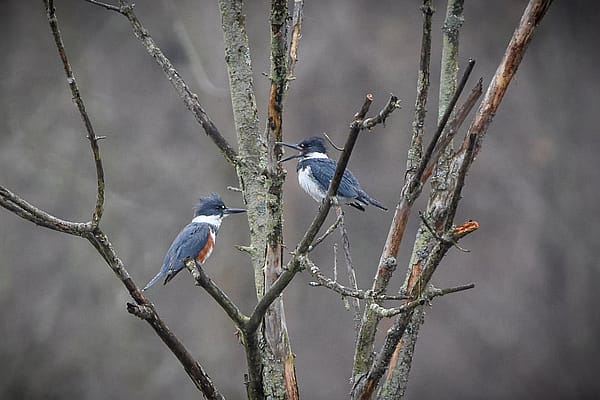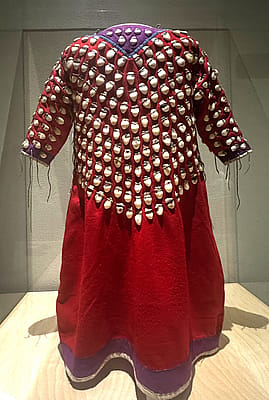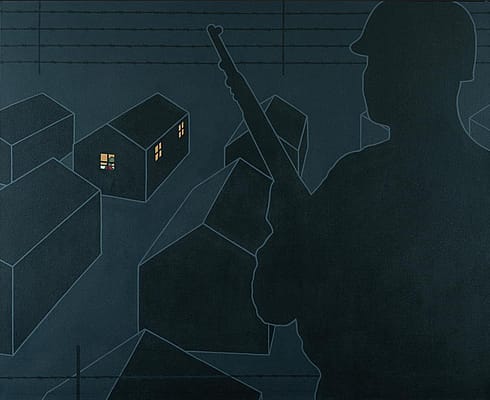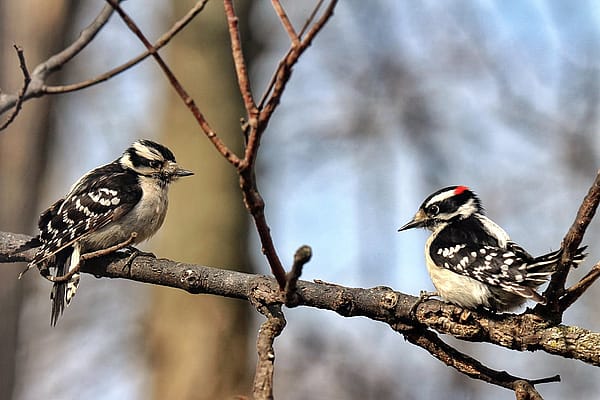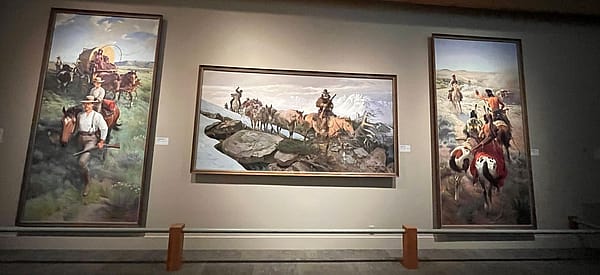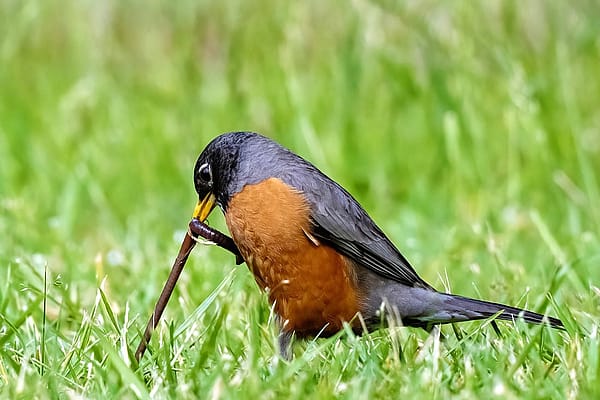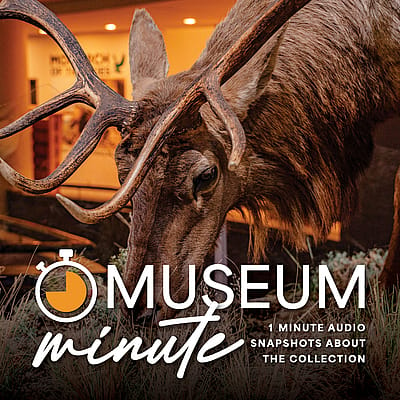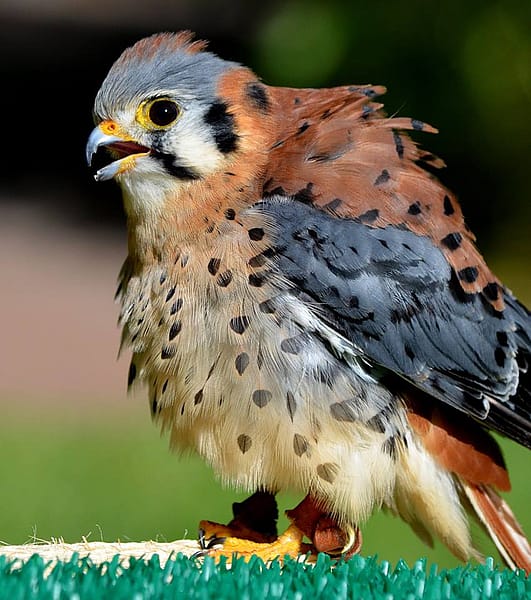
What are Preening and Rousing?

“Why did that bird shake?” This is a question I am occasionally asked when a visitor observes one of our birds ruffling up its feathers and shaking. Our Peregrine Falcon, Hayabusa, frequently will do this while on the glove during programs. This behavior is called a rouse and is a common behavior for all birds.
What is a Rouse?
Birds rouse by raising their feathers away from their body, then shaking them out. This rearranges the feathers back into a normal position. Furthermore, rousing shakes out debris or excess water from their feathers. Often birds rouse during grooming, after a bath, or just when the bird feels calm and relaxed. Therefore, if one of our birds rouses during a program we know that it is relaxed and feels no stress being in public.
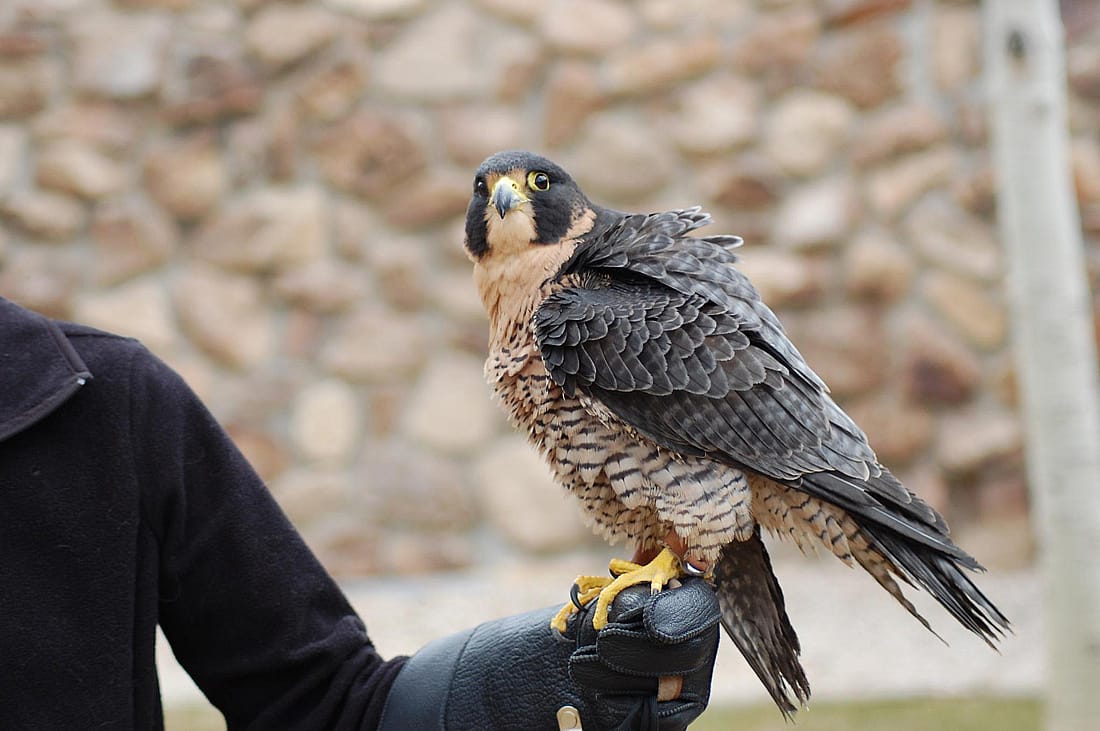
Rousing happens rapidly, so enjoy this slow motion look at a rouse in this video clip from World Bird Sanctuary. The first part of the video is at regular speed, and the second part of the video is in slow motion. https://fb.watch/eXA0sm_cZl/
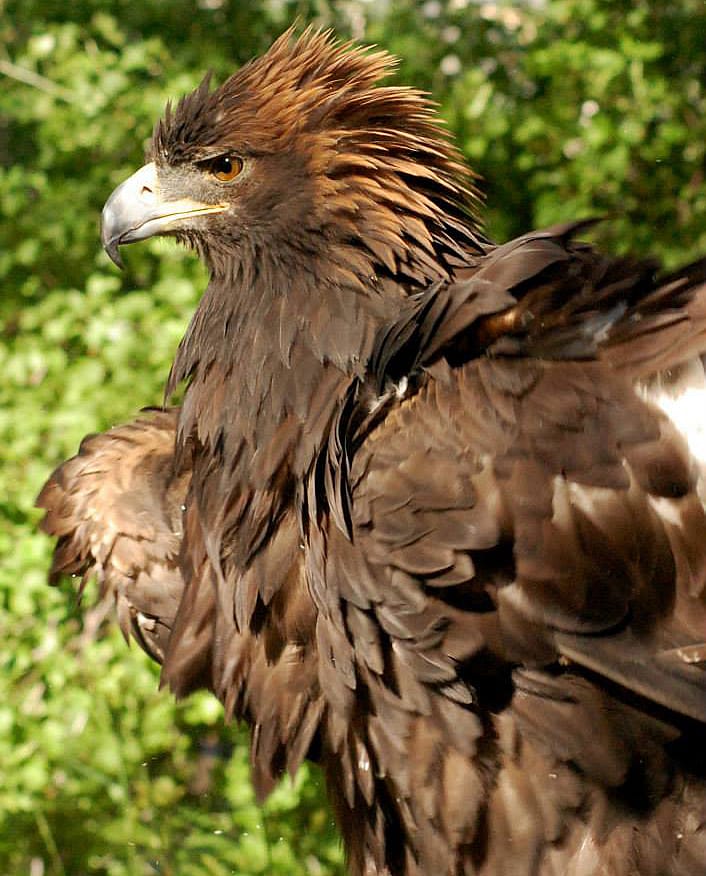
How Do Birds Preen?
If you are a bird watcher or have ever owned a pet bird you have observed preening. But not all visitors to our raptor programs understand what a bird is doing when they see it preening.
A preening bird may gently nibble at their feathers, moving their beaks along the full length of each feather. At other times they may more aggressively pull their feather through their beaks from base to tip.
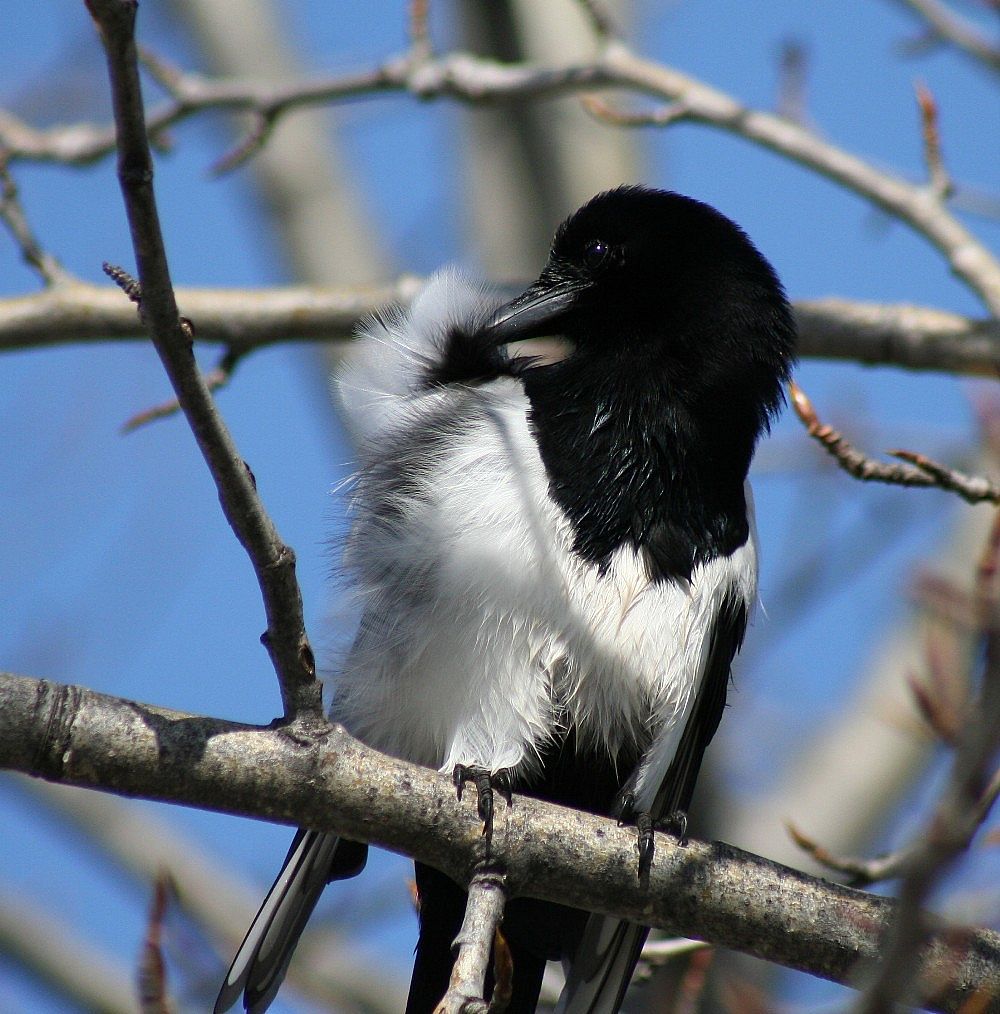
Suli, our Turkey Vulture, is the bird our visitors will commonly observe preening. Contrary to a frequent belief that vultures are dirty birds, Turkey Vultures enjoy being clean. They regularly bath and take meticulous care of their feathers. When Suli is presented in programs she often spends a major part of her time preening.
Suli can at times be quite aggressive with her preening. She may roughly grab a tail feather and run it though her beak from base to tip. As a result the feather may bend in a horseshoe shaped arch. This causes some visitors to wonder if she might break them, but her tail feathers are very flexible.
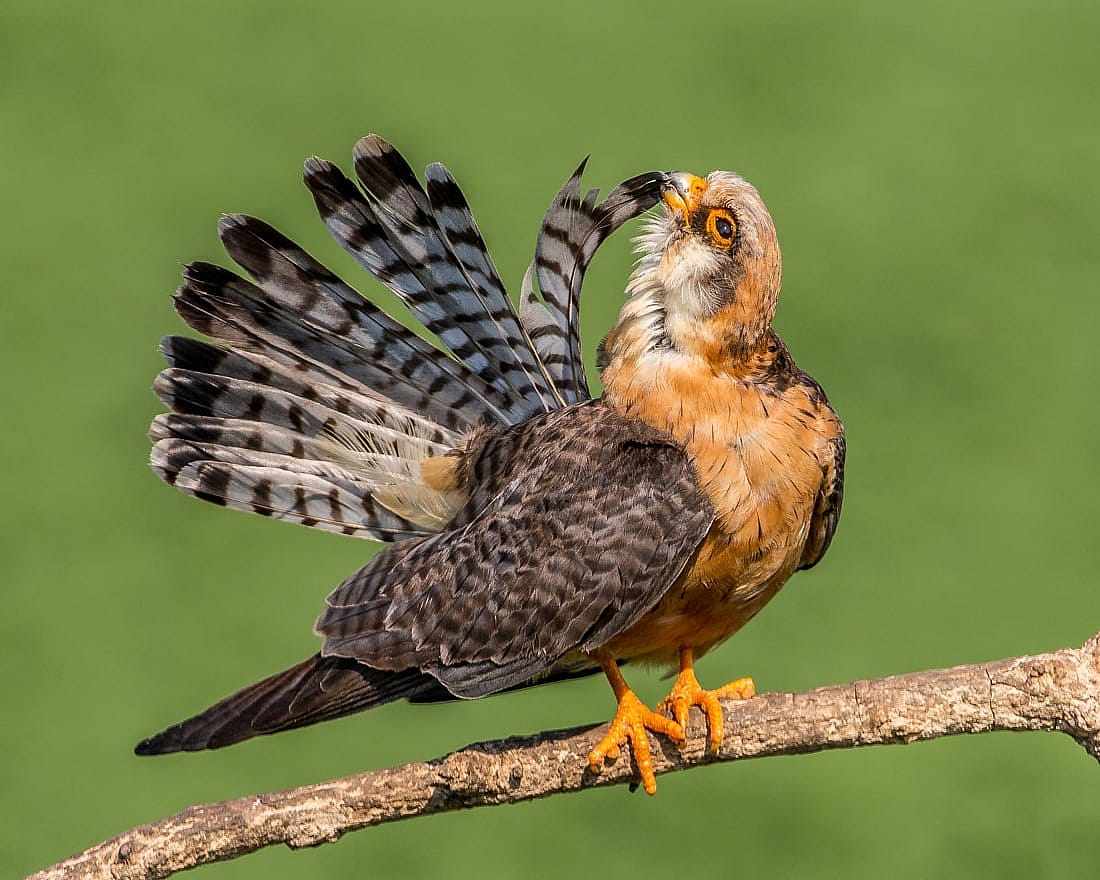
Why Do Birds Preen?
Birds preen to keep their feathers in good condition. This behavior smoothes feather surfaces. It also repairs small separations in feathers by linking the individual strands in a feather together. Preening also cleans parasites and debris out of the feathers.
If you observe this behavior you will often also see birds nibbling at the base of their tails. Located just above the base of the tail is an oil glad (uropygial gland) which, when pressed or nibbled, will release oil. While preening, this oil is spread over the feathers. If a bird’s feathers get too dried out they will become brittle. Therefore this oil is important for healthy feathers.
Furthermore, the oil helps birds by causing water to bead and run off. This oil contains antibacterial and antifungal agents to help keep the bird healthy. Plus the ultraviolet light the bird receives while sunning changes substances in the oil into vitamin D. Therefore, as they oil and preen their feathers they ingest vitamin D which subsequently helps birds to process calcium.
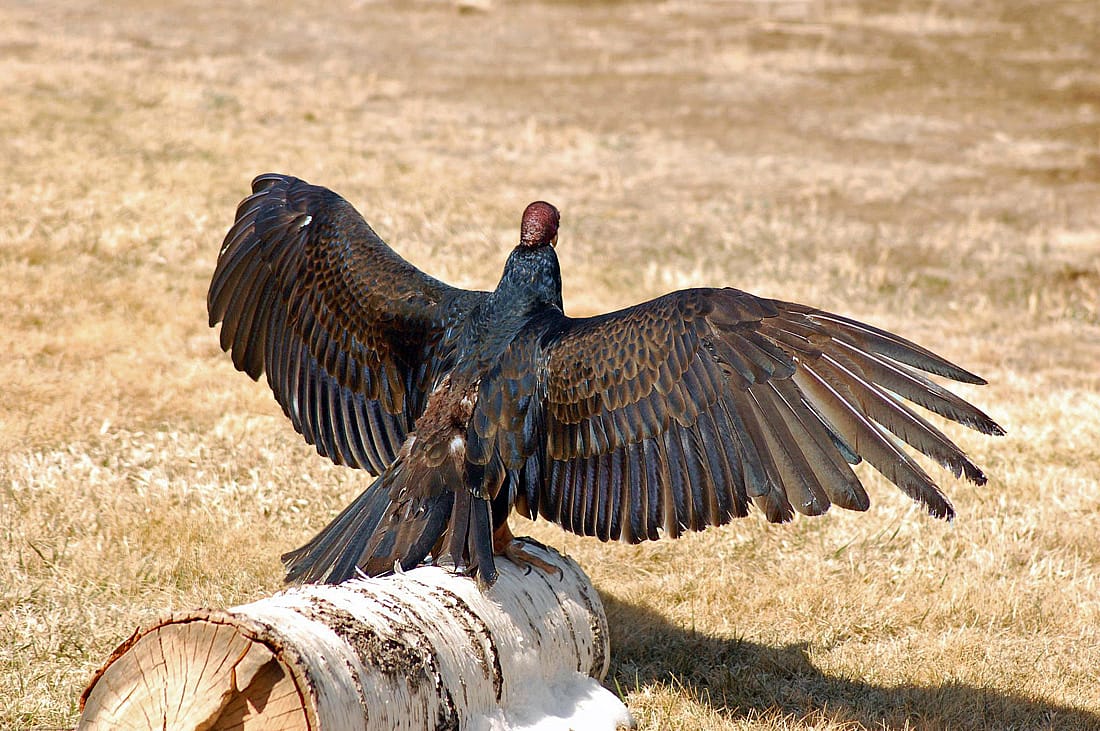
How Can Birds Preen and Oil Their Heads?
As flexible as they are, birds can not use their beaks to preen their head feathers. Therefore, you may observe a preening bird rubbing the sides of its face and head against its shoulders. As a result, the bird is picking up oil and smoothing its head feathers. Or birds may simply wipe their heads on the oil gland.
Birds may also place oil on their toes, then use their feet to comb oil through their head feathers. Owls have special adaptations on their feet to help with this. Their two outer talons have sharp edges which enable them to easily comb through their head feathers.
Allopreening is another behavior that birds use. Mated pairs will preen each other as part of their courtship or bonding activity. One of the areas commonly preened during allopreening are each other’s heads and faces.
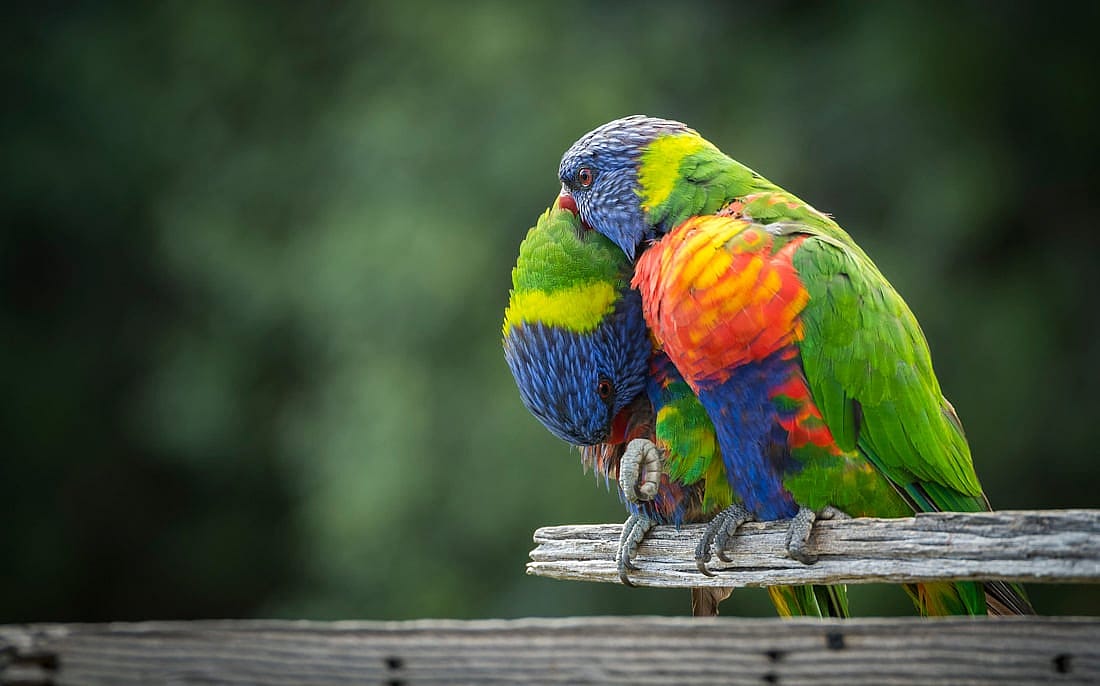
For a brief illustration of preening and allopreening watch this short 1:31 minute video of Inca Doves preening and allopreening.
https://www.youtube.com/watch?v=rOafajZ8lsM
In Conclusion
Both preening and rousing are common behaviors that are easily observed in birds. These two behaviors often can be seen together as birds preen and shake out their feathers. Both are essential to the health of birds as well as for keeping their feathers in good condition.
Photo Credits:
Salem, Hayabusa, Kateri, and Suli photos are from the Draper Museum Raptor Experiences archives.
Magpie preening by Twila, Attribution 2.0 generic license
Female Red-footed Falcon preening by Andy Morffew, Attribution 2.0 Generic License
Preenintg Mute Swan by ufopilot, Attribution0NonCommercial 2.0 Generic license
Rainbow Lorikeets preening by Wadek Tregaskis, Attribution-Noncommercial 2.0 Generic license
Written By
Anne Hay
Anne Hay has a Bachelor's degree in Elementary Education and a Master's in Computers in Education. She spent most of her working years teaching third grade at Livingston School in Cody, Wyoming. After retiring she began doing a variety of volunteer work for the Buffalo Bill Center of the West’s Draper Natural History Museum. Anne loves nature and has a concern for the environment. She believes that educating the public, so that they will have a better understanding and appreciation for the natural world, is very important. Because of this belief, volunteering at the Center is a perfect fit. She spends time in the Draper Lab, observing eagle nests for Dr. Charles Preston’s long-term research project on nesting golden eagles, writing observation reports of raptor sightings in the Bighorn Basin, and working with the Draper Museum Raptor Experience. Anne states that, “Having a bird on my glove, is one of my all time favorite things in life.”
